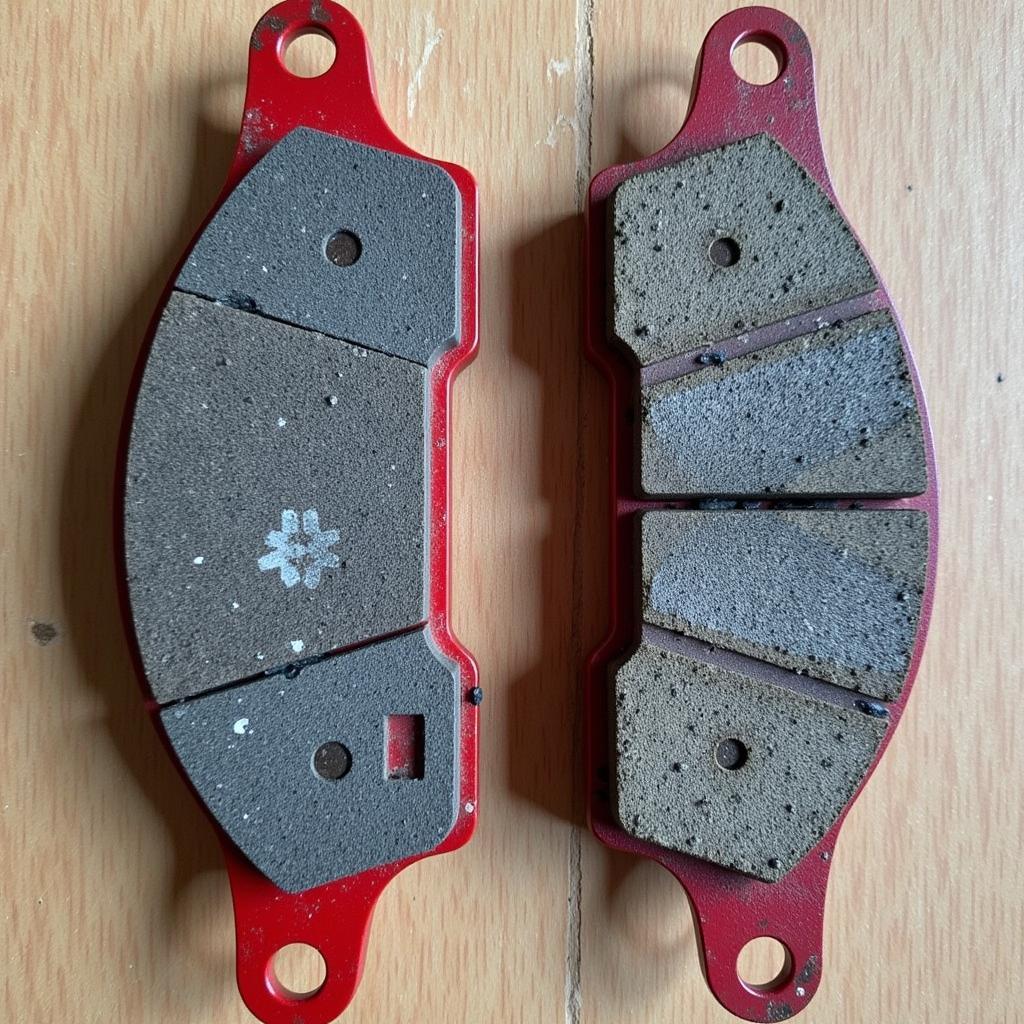You’re cruising down the road in your trusty 1993 GMC Vandura, and suddenly, both the ABS and brake warning lights illuminate on the dashboard. A sinking feeling might hit you – and rightfully so. These lights signal a potential issue within your van’s braking system, a system you don’t want to mess around with. But before you panic, take a deep breath and remember – knowledge is power. Understanding the common causes and knowing how to diagnose the problem can save you time, money, and unnecessary stress. This guide will walk you through the potential culprits behind those illuminated warning lights and equip you with the knowledge to take the next step.
What to Do When Your ABS and Brake Lights Turn On
First things first, safety is paramount. A dual warning light situation usually indicates a more serious issue than just one light. This means your braking system might not be functioning at its full potential. Here’s a step-by-step approach to dealing with this situation:
- Pull over safely. Find a safe spot to park away from traffic.
- Check your brake fluid. This is the most common culprit. Locate your brake fluid reservoir under the hood and check the fluid level. If it’s low, top it off with the correct brake fluid type specified in your owner’s manual.
- Inspect your brake lines. Look for any signs of leaks, cracks, or damage to the brake lines running from the master cylinder to the wheels.
- Avoid driving (if possible). If the brake fluid is significantly low or you notice any damage to the brake lines, it’s best to avoid driving the van and have it towed to a mechanic. Continuing to drive with a compromised braking system can be incredibly dangerous.
Common Causes of ABS and Brake Light Warnings in a 93 GMC Vandura
While a low brake fluid level is a common and relatively simple fix, several other issues can trigger both the ABS and brake warning lights in your 1993 GMC Vandura. Let’s take a look:
1. Faulty ABS Wheel Speed Sensor
The ABS (Anti-lock Braking System) relies on information from wheel speed sensors to function correctly. A faulty sensor can disrupt this flow of information, causing the ABS system to malfunction and illuminate the warning lights.
How to Identify: A mechanic can diagnose a bad wheel speed sensor using a diagnostic tool.
2. Malfunctioning ABS Module
The ABS module acts as the brain of the anti-lock braking system. If it fails, it can throw the entire system out of whack, leading to illuminated warning lights.
How to Identify: A mechanic will typically diagnose this with a diagnostic scanner that can read the codes stored in the ABS module.
3. Worn-Out Brake Pads or Shoes
While worn brake pads alone typically trigger a separate brake wear indicator light, exceptionally worn pads can sometimes interfere with the ABS system, causing both lights to turn on.
How to Identify: You can often hear a squealing sound when applying the brakes if the pads are excessively worn. Visual inspection will confirm their condition.
 Worn brake pads
Worn brake pads
4. Damaged or Corroded Wiring
The electrical components of your braking system, including the ABS system, rely on a network of wires to function. Over time, these wires can become damaged, corroded, or frayed, disrupting the signal and causing malfunctions.
How to Identify: A visual inspection of the wiring connected to the ABS module, wheel speed sensors, and brake light switch can reveal any visible damage.
5. Blown Fuse
A blown fuse in the ABS system can interrupt the flow of electricity, leading to a system malfunction and triggering the warning lights.
How to Identify: Check your owner’s manual for the location of the ABS fuse and visually inspect it. A blown fuse will have a broken wire inside.
Remote Diagnostics and Programming: The Future of Car Repair
The automotive industry is rapidly evolving, and with it, the way we diagnose and repair vehicles. Remote diagnostics and programming are becoming increasingly popular, offering a convenient and efficient alternative to traditional repair methods.
“Remote diagnostics have revolutionized how we approach automotive repair,” says John Smith, a seasoned automotive electrician with over 20 years of experience. “We can now connect to a vehicle’s computer system remotely, diagnose problems, and even reprogram certain modules without the vehicle ever stepping foot in a shop.”
This technology allows skilled technicians to access your vehicle’s computer system remotely, retrieve diagnostic codes, and identify the root cause of the problem.
 Remote car diagnostics
Remote car diagnostics
What to Do Next
If you’re experiencing illuminated ABS and brake warning lights in your 1993 GMC Vandura, taking action is crucial. While checking the brake fluid level is an excellent first step, a proper diagnosis from a qualified mechanic is always recommended.
Remember, your brakes are your vehicle’s most crucial safety feature. Don’t ignore these warning signs. Addressing the issue promptly will get you back on the road safely and confidently.
